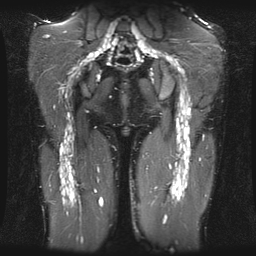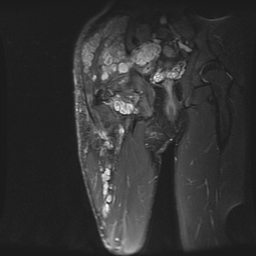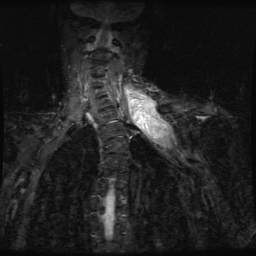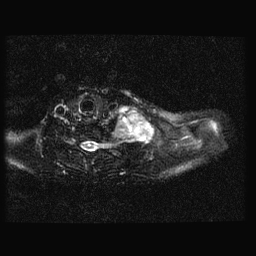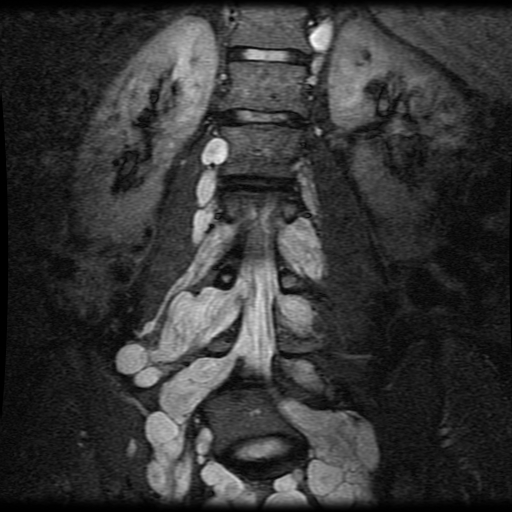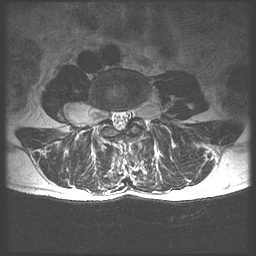| UW MSK Resident Projects |
|
|
|
|
Neurofibromatosis Type 1Print-friendly version of this pagePosted by mchang14@hotmail.com, 1/5/04 at 3:03:06 PM.
Etiology: Also known as von Recklinghausen disease, neurofibromatosis type 1 (NF1) is the result of a defect on Chromosome 17. Prevalence: 1 in 3000-4000 people. Half are caused by new mutations (mutation rate is 1 case per 10,000 population). Inheritance Pattern: Autosomal dominant. 100% penetrance. Mortality/Morbidity: Mean age of death is 54.4 years, compared to 70.1 for the general US population. Malignant transformation of a peripheral nerve sheath tumor is 3-15%. Diagnostic criteria (need at least 2):
Radiologic Findings:
Fig 1a and b. Two images from two different patients demonstrates extensive neurofibromas involving bilateral sciatic nerves (image a), and exiting out the sciatic notch into the peripheral nerves of the right gluteal and thigh muscles (image b).
Fig 2. Two images from the same patient shows a large paravertebral soft tissue mass engulfing C6-8 nerve roots. Axial image demonstrates tumor extending out the left neural foramen.
Fig 3. Two images from the same patient demonstrates large bilateral neurofibromas involving bilateral lumbar nerve roots, and enlarging the neural foramen. Axial image demonstrates the so-called dumbbell lesion. |
|
